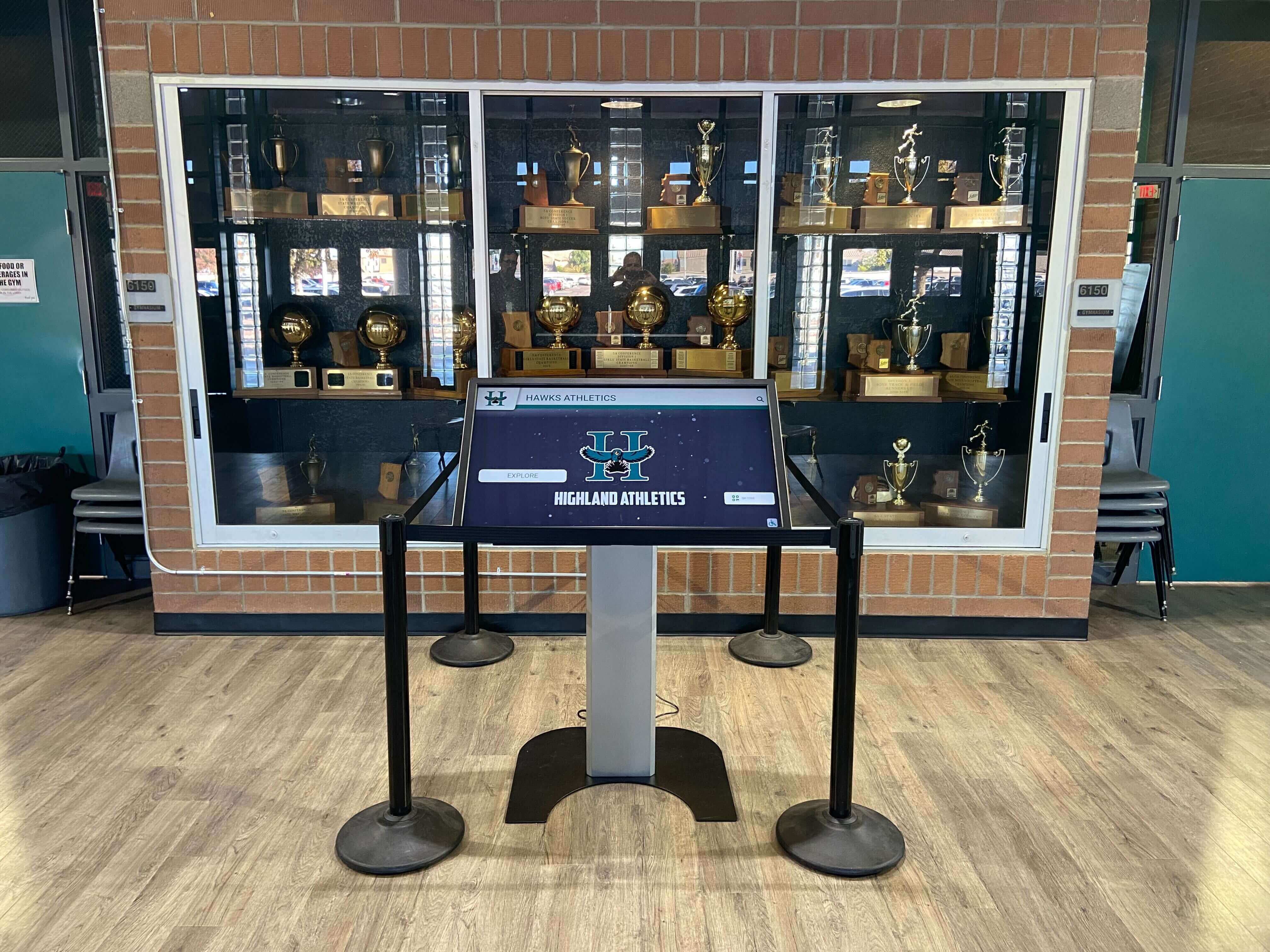Communities thrive when they celebrate the people who make them better. Recognition validates contributions, inspires continued service, and creates visible examples that motivate others to get involved. Yet traditional recognition methods—plaques that gather dust, newsletter mentions that are quickly forgotten, or annual ceremonies attended by a small fraction of residents—often fail to create the ongoing visibility and engagement that drives meaningful community impact.
Interactive touchscreen displays designed for community praise offer municipalities, civic organizations, nonprofits, and community institutions a powerful platform for honoring local contributors year-round. These dynamic systems enable rich multimedia storytelling, allow real-time content updates, and create public-facing tributes that inspire residents while preserving community history for future generations.
This comprehensive guide explores how communities can implement touchscreen displays for praising local heroes, examining content strategies, technology selection, implementation approaches, and real-world applications that transform how communities recognize and celebrate the individuals who make their communities special.
Understanding Community Praise and Its Impact
Public recognition serves as one of the most powerful yet underutilized tools for strengthening community engagement and civic participation.
The Power of Public Recognition in Community Building
When communities consistently celebrate contribution, they communicate shared values while providing role models that inspire similar engagement by others. Public recognition creates measurable impacts on community health and vitality.
Research on civic engagement demonstrates that visible recognition of community contribution correlates with higher volunteer participation rates, increased civic involvement, stronger community identity, and enhanced attraction of talented individuals who want to live where contributions are valued and celebrated.
Recognition doesn’t simply reward past achievement—it catalyzes future contribution by demonstrating that communities notice and value residents who make differences. When potential volunteers see neighbors honored prominently for community service, they’re more likely to seek their own opportunities to contribute. When young people see local heroes celebrated, they develop aspirations to become recognized contributors themselves.
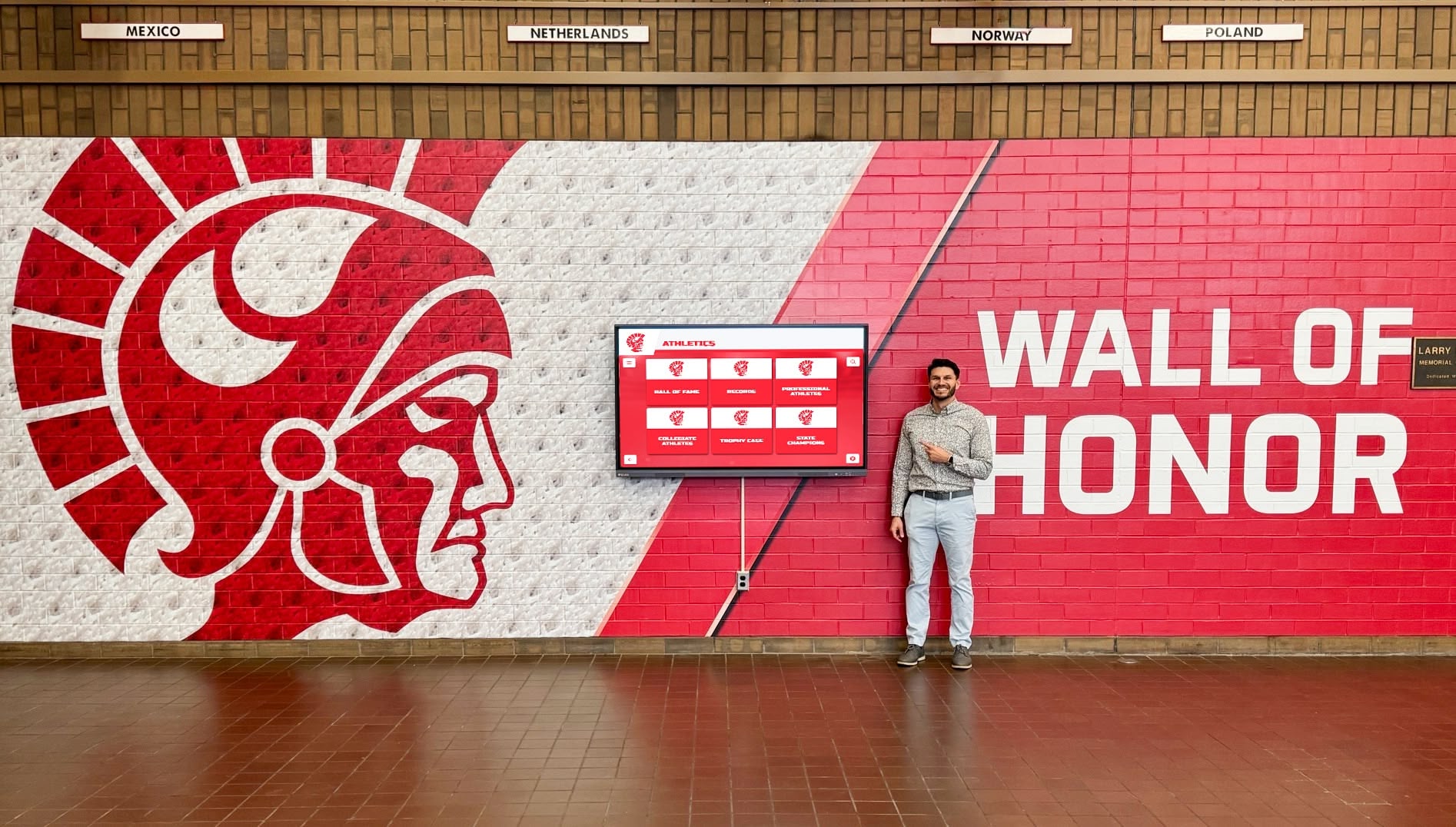
Types of Community Contributions Worthy of Praise
Comprehensive community praise displays recognize diverse accomplishment categories ensuring various contribution types receive appropriate acknowledgment:
Volunteer Service and Civic Engagement: Recognition of volunteer hours milestones, board and committee service, nonprofit leadership, community project completion, and sustained civic participation honors the volunteers who form the backbone of thriving communities. Celebrating volunteer contributions validates unpaid work while encouraging continued involvement.
First Responders and Public Safety: Acknowledgment of firefighters, law enforcement officers, emergency medical technicians, emergency management volunteers, disaster relief participants, and public health workers recognizes both everyday dedication and extraordinary response when communities face emergencies.
Educational Excellence: Celebration of outstanding teachers, innovative administrators, academic achievers, scholarship recipients, education volunteers, and literacy champions acknowledges that educational success strengthens entire communities beyond individual benefit.
Community Beautification and Environmental Stewardship: Recognition of park volunteers, community garden leaders, conservation efforts, sustainability initiatives, environmental education, and green infrastructure development celebrates contributions ensuring community environmental health and beauty for current and future generations.
Arts, Culture, and Heritage: Acknowledgment of artistic excellence, cultural programming leadership, heritage preservation efforts, arts education, and cultural celebrations validates creative contributions that enrich community cultural life and strengthen local identity.
Business and Economic Contribution: Recognition of entrepreneurship, local business longevity, job creation, economic development leadership, and business community involvement highlights the vital connection between business success and community prosperity.
Many communities implementing comprehensive recognition programs benefit from understanding proven strategies for honoring community accomplishments that ensure consistent acknowledgment across diverse contribution categories.
Why Traditional Recognition Methods Fall Short
Traditional approaches to community recognition often include plaques mounted in government buildings, printed newsletters with contributor spotlights, annual award ceremonies, paper certificates, and physical donor walls. While these methods demonstrate appreciation, they present significant limitations.
Physical plaques provide limited information capacity—typically just names, dates, and brief descriptions. They require physical presence for viewing, meaning only those who happen to visit specific buildings ever see the recognition. Adding new honorees or updating information requires expensive physical modification. Perhaps most significantly, traditional static displays are easily overlooked; people walk past them daily without engaging.
Annual ceremonies, while meaningful for honorees attending, reach only small fractions of community populations. The recognition visibility lasts for the ceremony duration, then fades as communities return to daily routines. Those honored are celebrated in the moment, but the wider community never learns about their contributions.
Newsletter mentions suffer from similar temporal limitations—they’re timely when published but quickly disappear as new issues arrive. Most community members never read every newsletter, meaning many contributions go unnoticed by broader populations.
Understanding how digital wall of fame solutions provide enhanced recognition benefits helps community organizations evaluate whether technology-enhanced displays address the limitations of traditional approaches.
How Community Praise Touchscreen Displays Work
Interactive touchscreen technology transforms community recognition from static acknowledgment into engaging, multimedia experiences that honor contributors in ways traditional methods cannot match.
Essential Features of Community Praise Displays
Rich Multimedia Profiles: Modern touchscreen displays support diverse content types that bring community praise to life beyond simple name listings:
- Professional photographs showing honorees in action serving their communities
- Video tributes featuring honorees discussing why they contribute and what community service means to them
- Colleague and neighbor testimonials expressing appreciation and describing specific impacts
- Written biographies detailing contribution histories and community achievements
- Photo galleries showing volunteers engaged in community projects and events
- Audio recordings of honoree voices sharing memorable experiences
Interactive Exploration Capabilities: Unlike static plaques showing only names and dates, interactive systems allow community members to discover extensive content about each honored contributor:
- Detailed contribution histories and volunteer backgrounds
- Specific projects, initiatives, and accomplishments
- Years of service and volunteer hour milestones
- Organizations served and leadership roles held
- Community impact stories and testimonials from those helped
- Personal motivations and inspiration for community involvement

Real-Time Updates and Continuous Recognition: Digital platforms enable ongoing praise throughout the year, not just during annual events:
- Add new honorees immediately following recognition decisions
- Celebrate milestone achievements like volunteer hour landmarks
- Update profiles as contributors take on new community roles
- Feature rotating “Community Hero Spotlight” content monthly
- Add new testimonials and appreciation messages continuously
- Refresh photos showing honorees at recent community events
Search and Discovery Features: Intuitive navigation enables community members to explore recognition content in multiple ways:
- Search by honoree name or organization served
- Browse by contribution category or type of service
- Filter by year of recognition or service dates
- Discover featured honorees through rotating spotlights
- Access alphabetical directories for easy navigation
- View related honorees who served similar causes
Advantages Over Traditional Recognition Approaches
Interactive touchscreen displays provide numerous advantages addressing the limitations of traditional recognition methods:
Unlimited Capacity: Physical wall space constrains traditional recognition to limited numbers of honorees. Digital displays accommodate unlimited community heroes—every deserving contributor can be featured prominently regardless of how many people earn recognition over years and decades.
Comprehensive Storytelling: Static plaques limit content to brief text. Touchscreen displays showcase complete stories through photos, videos, detailed biographies, and testimonial collections that truly honor contributions and inspire viewers.
Easy Updates: Modifying physical plaques requires expensive engraving and installation work. Digital content updates take minutes through simple content management systems requiring no technical expertise or physical modification.
Always Current: Traditional displays show outdated information until someone invests resources in updates. Digital platforms stay current through regular content refreshes ensuring recognition remains relevant and accurate.
Engaging Presentation: Eye-catching displays with motion graphics, video content, and interactive features naturally attract attention and encourage exploration in ways static plaques cannot match. Community members actively engage rather than passively glancing at wall plaques.
Accessible Anywhere: Physical recognition requires visiting specific buildings during operating hours. Digital platforms can extend online, making community praise accessible from anywhere at any time, reaching residents who may never visit physical locations.
Organizations exploring recognition technology benefit from understanding comprehensive approaches to interactive hall of fame systems that combine physical displays with digital accessibility.
Content Strategies for Effective Community Praise
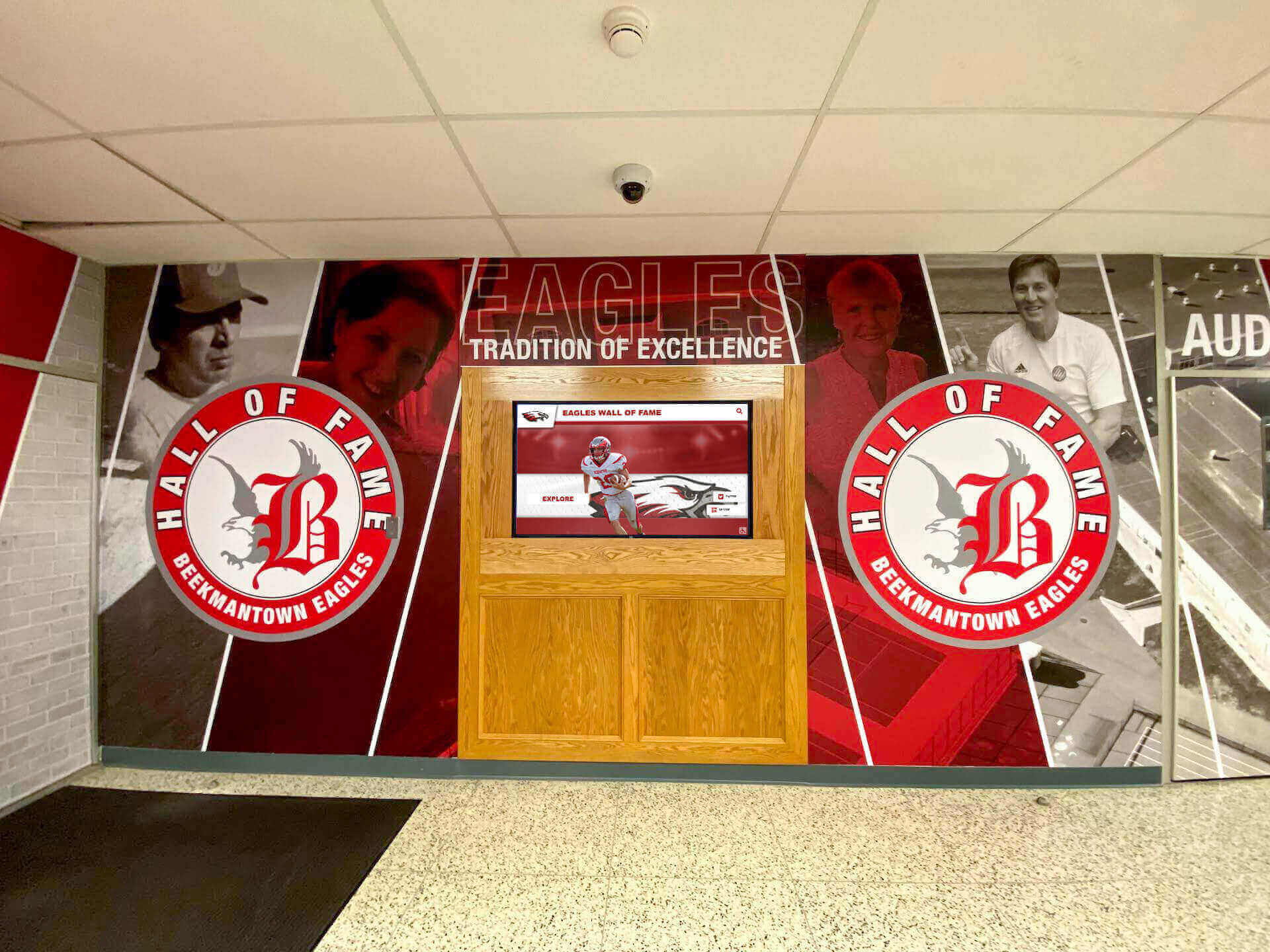
Compelling content transforms touchscreen technology from impressive hardware into meaningful recognition that genuinely honors community contributors.
Creating Powerful Honoree Profiles
Comprehensive community praise profiles should include essential components that tell complete stories:
Basic Recognition Information:
- Full name and preferred name
- Recognition category (volunteer service, public safety, education, etc.)
- Year of recognition or service period dates
- Primary organizations or causes served
- Major roles held or projects led
- Community impact summary highlighting key contributions
Contribution Details and Achievements:
- Specific volunteer projects and initiatives led
- Estimated volunteer hours contributed over service history
- Awards, honors, and external recognition received
- Leadership positions held in community organizations
- Tangible community improvements resulting from their work
- Populations served and lives impacted through their contribution
Personal Elements That Humanize Honorees:
- Why they became involved in community service
- What community involvement means to them personally
- Memorable moments or experiences from their volunteer work
- How their contributions have evolved over time
- Personal connections to the causes they serve
- What they hope their legacy will be in the community
Rich Multimedia Content:
- Professional portraits showing honorees in community settings
- Action photography capturing volunteers engaged in service
- Video interviews discussing their community passion and motivation
- Photo galleries showing honorees at community events over years
- Video testimonials from those who benefited from their service
- Historical photos documenting long-term contributions
Collecting Compelling Testimonials and Stories
Testimonials from community members who witnessed contributions firsthand provide the most powerful validation of impact. Creating systematic processes for collecting appreciation messages ensures rich content:
Collection Methods:
- Nomination forms requesting specific impact stories
- Video recording sessions at community events
- Written testimonial submissions through online forms
- Interviews with organization leaders who worked with honorees
- Feedback from community members who benefited from services
- Testimonial collection during recognition ceremonies
Effective Testimonial Questions:
- “How has this person’s contribution improved our community?”
- “What will you remember most about their service?”
- “Describe a specific moment when this person made a difference”
- “What makes this community contributor exceptional?”
- “How has our community changed because of their involvement?”
- “What would you want this person to know about their impact?”
Presentation Approaches:
- Written testimonials with contributor attribution
- Video testimonials with appropriate permissions
- Audio recordings of testimonial messages
- Anonymized feedback when privacy is preferred
- Collective statements from organizations served
- Impact statistics demonstrating quantitative results
Communities implementing systematic recognition discover that storytelling approaches make digital recognition compelling for diverse audiences while truly honoring contributions.
Celebrating Milestones and Ongoing Contributions
Recognition displays should acknowledge both initial honors and continued service over time:
Service Milestone Recognition: Celebrate volunteer hour milestones (100, 500, 1,000, 5,000+ hours) with special profile updates featuring volunteer reflections, impact summaries, and testimonials from those served across years of contribution.
Anniversary Acknowledgments: Mark service anniversaries (5, 10, 20, 30+ years) with special content highlighting how contributions evolved, communities changed through their work, and inspiration provided to others over decades of service.
Project Completion Celebrations: Feature successful community projects highlighting the volunteers who made them possible. Include project descriptions, outcomes achieved, team member contributions, and lasting community benefits.
Award Recognition: When community contributors receive external recognition—state awards, national honors, professional recognition—celebrate these acknowledgments prominently, explaining award significance and highlighting the contributions that earned external validation.
Leadership Transition Honors: Recognize volunteers who step into new leadership roles, expand their community involvement, or mentor next-generation volunteers. Celebrate the multiplication of impact as honored contributors inspire and develop others.
Planning and Implementing Community Praise Displays
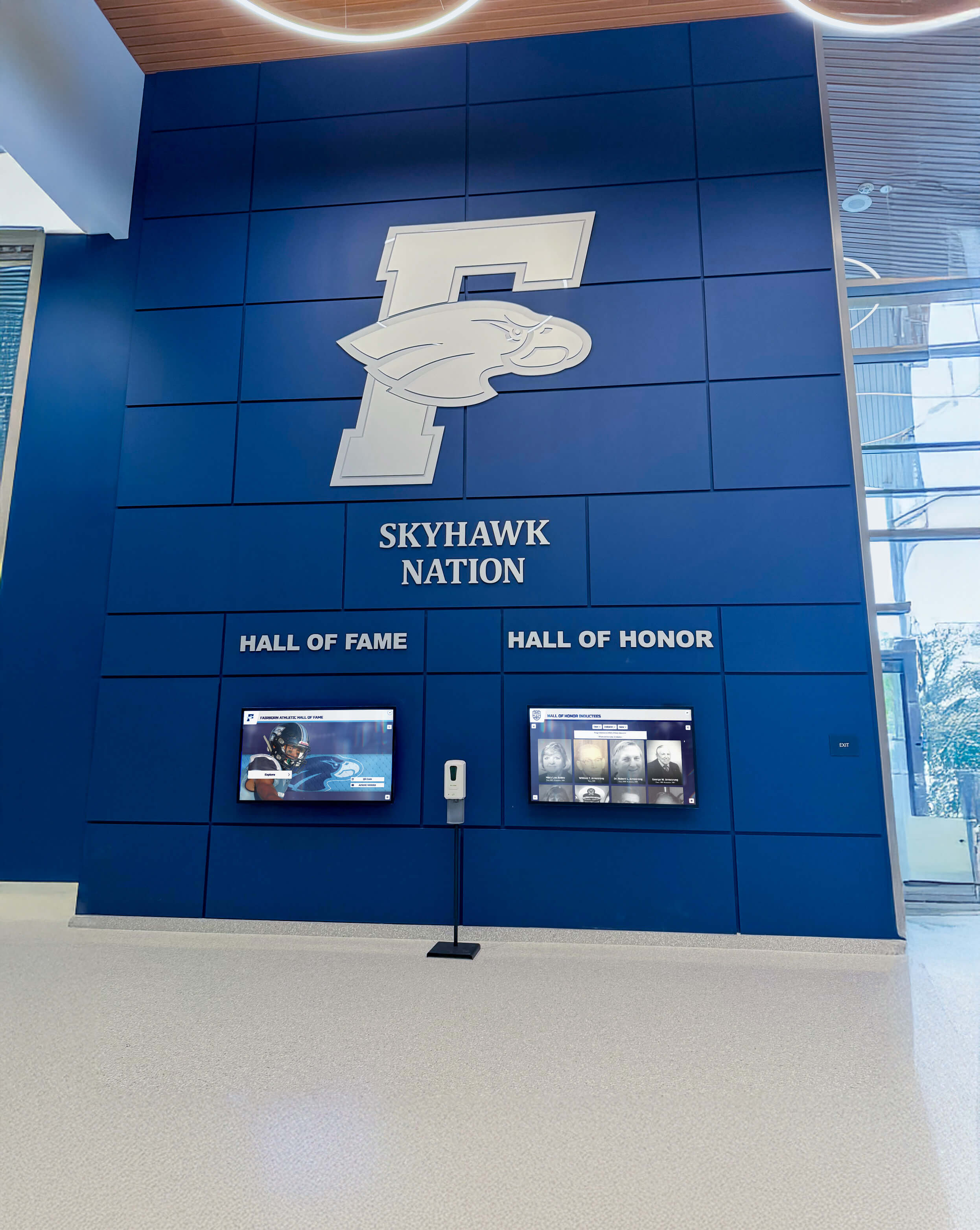
Successful implementation requires thoughtful planning addressing technology selection, location strategies, content development, and ongoing management.
Selecting Optimal Display Locations
Location dramatically influences recognition visibility and community engagement:
High-Traffic Community Spaces:
- City hall lobbies and main entrances where residents visit regularly
- Public library entrances and main reading areas
- Community center gathering spaces and lobbies
- Senior center common areas where active volunteers gather
- Recreation facility entrances serving diverse age groups
- Public park visitor centers and trailheads
Location Selection Criteria:
- Daily foot traffic from diverse community populations
- Adequate space for multiple viewers to gather comfortably
- Clear sight lines attracting attention from pathways
- Appropriate dignity matching recognition significance
- Sufficient lighting ensuring visibility without screen glare
- Accessibility for individuals with mobility limitations
- Physical security preventing vandalism or tampering
- Proximity to power and network infrastructure
Multi-Location Strategies: Larger or geographically dispersed communities benefit from multiple displays in different areas:
- District-specific displays featuring neighborhood heroes
- Specialized displays at facilities serving particular populations
- Mobile kiosks rotating between community events and locations
- Companion online platforms extending reach beyond physical displays
Technology Selection and Hardware Specifications
Display Size Recommendations: Choose display sizes appropriate for typical viewing distances and expected group sizes:
- Small community centers: 43-55 inch displays
- Medium municipal facilities: 55-65 inch displays
- Large city halls or community centers: 65-75 inch displays
- Outdoor or high-ceiling spaces: 75+ inch displays
Touchscreen Technology Options: Commercial-grade capacitive or infrared touch technology provides responsive, reliable interaction. Infrared touch works particularly well for larger displays (65"+) and accommodates interaction by individuals wearing gloves or using accessibility devices.
Mounting and Enclosure Solutions:
- Wall-mounted installations for permanent, space-efficient placement
- Floor stand kiosks allowing flexible positioning and relocation
- Secure enclosures for outdoor or high-traffic areas requiring protection
- ADA-compliant mounting heights ensuring accessibility
- Tilt-adjustable mounts accommodating optimal viewing angles
Computing and Connectivity Requirements: Displays require media players or computers running recognition software with specifications including:
- Sufficient processing power for smooth touch interaction
- Adequate storage for multimedia content libraries
- Reliable network connectivity (wired Ethernet strongly preferred)
- Remote management capabilities enabling content updates
- Backup and recovery systems protecting recognition content
For detailed guidance on hardware selection, communities can explore comprehensive hardware selection guides for digital recognition displays explaining technical considerations and integration approaches.
Software Platform Capabilities
Recognition software determines functionality, ease of content management, and long-term sustainability. Essential software capabilities include:
Content Management Systems: Intuitive interfaces allowing non-technical staff to add honorees, update profiles, and manage content without programming knowledge. Look for simple forms, drag-and-drop media uploads, and visual editing capabilities.
Multimedia Support: Robust support for diverse content types including high-resolution photos, video files in multiple formats, audio recordings, PDF documents, and text formatting options for rich biographies.
Search and Navigation Features: Powerful search functionality enabling visitors to find honorees by name, organization, year, or contribution type. Intuitive browsing categories and featured content rotations ensure engagement.
Responsive Design: Software that automatically adapts to different screen sizes and orientations, working seamlessly on touchscreen kiosks, desktop computers, tablets, and smartphones for maximum accessibility.
Security and Permissions: Access controls ensuring only authorized staff can modify recognition content while allowing public viewing. Audit trails tracking content changes and version history for accountability.
Integration Capabilities: Options to embed recognition content on community websites, share on social media, export data for reports, and connect with other community technology platforms.
Understanding comprehensive touchscreen kiosk software capabilities helps communities evaluate platform options and select solutions matching their specific needs and technical resources.
Budget Planning and Funding Approaches
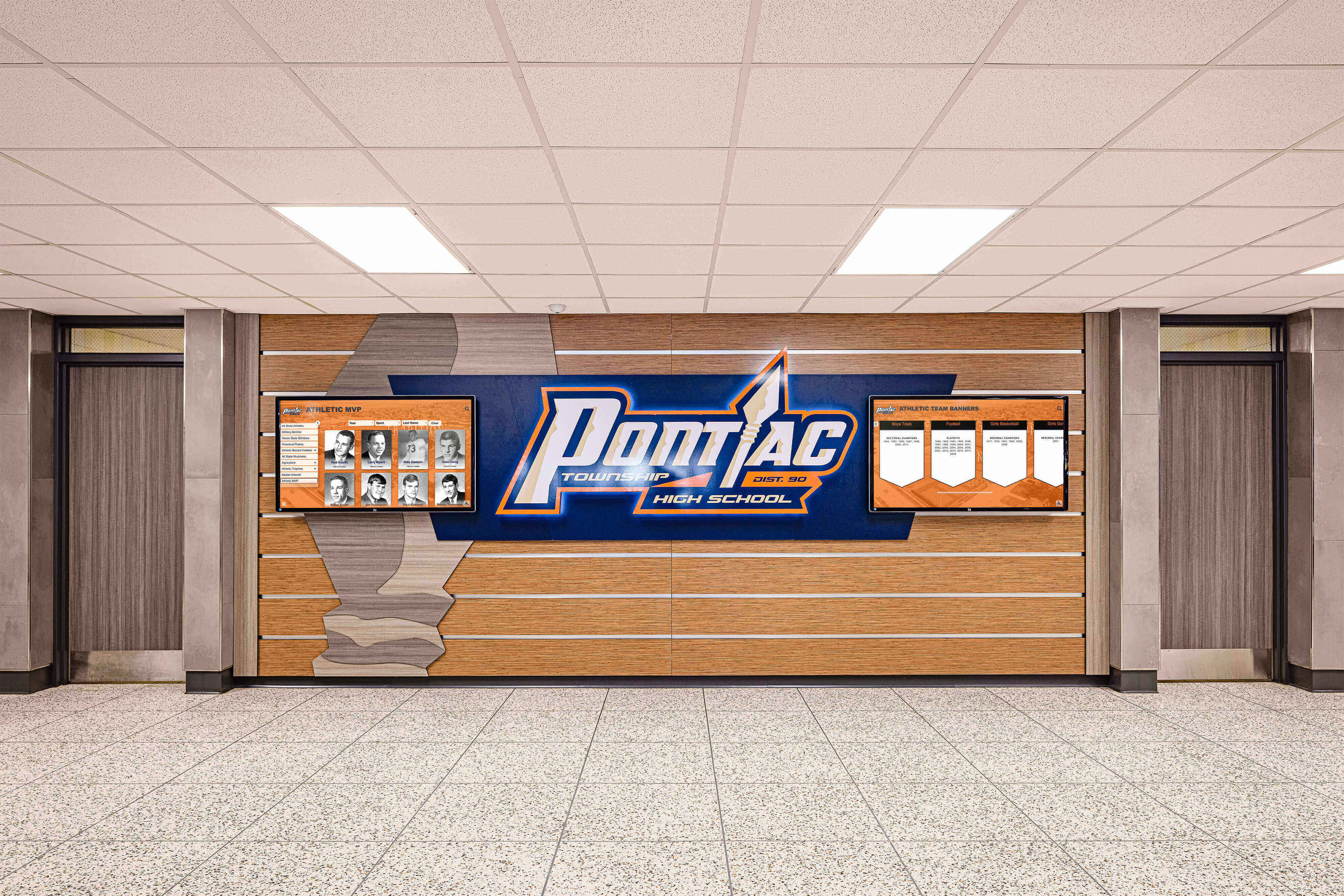
Typical Cost Components:
Initial Investment:
- Display hardware: $1,500-$5,000
- Touchscreen interface: Included or $400-$1,000
- Media player/computer: $500-$1,500
- Mounting system and installation: $400-$1,200
- Software platform (first year): $1,000-$3,500
- Initial content development: $2,000-$8,000
- Total Initial Investment: $5,400-$20,200
Ongoing Annual Costs:
- Software licensing and hosting: $800-$2,500
- Content management and updates: $1,000-$3,000
- Hardware maintenance and support: $300-$600
- Network connectivity: $150-$400
- Periodic content refresh: $500-$2,000
- Total Annual: $2,750-$8,500
Funding Sources and Strategies:
- Municipal operating budgets or civic engagement funds
- Community foundation grants supporting civic participation
- Corporate sponsorships from local businesses
- Service club contributions (Rotary, Lions, Kiwanis)
- Memorial or tribute donations honoring community leaders
- Crowdfunding campaigns engaging community members
- Government grants supporting community engagement initiatives
Return on Investment Considerations: While challenging to quantify precisely, community praise displays create measurable value through increased volunteer recruitment, enhanced civic engagement, preserved community history, strengthened community identity, and inspired future contribution. Communities consistently report that recognition investments pay dividends through increased community participation and volunteerism.
Implementation Best Practices
Ensuring Inclusive and Equitable Recognition
Recognizing Diverse Contributions: Comprehensive recognition should include:
- Contributors across all recognition categories and service types
- Long-serving veterans and enthusiastic new volunteers
- High-profile leaders and behind-the-scenes contributors
- Volunteers serving all populations and causes
- Contributors representing diverse demographic backgrounds
- Individual honorees and collaborative team recognition
Leaving deserving contributors unrecognized—intentionally or accidentally—undermines the positive culture recognition programs aim to build. Budget time and resources to identify and feature the full spectrum of community heroes.
Fair Selection Processes: Establish transparent selection criteria and processes:
- Published criteria clearly defining recognition requirements
- Diverse selection committees representing community constituencies
- Open nomination processes accessible to all community members
- Consistent evaluation applying identical standards to all nominees
- Regular assessment of honoree demographics ensuring inclusion
Equitable Content Quality: Ensure consistent, high-quality content for all honorees regardless of community prominence. Every recognized contributor deserves professional photography, comprehensive biographies, and meaningful testimonials.
Maintaining Current and Engaging Content
Content Freshness Strategies: Stale content diminishes engagement. Implement processes ensuring:
- New honoree additions within four weeks of recognition decisions
- Annual profile reviews refreshing outdated information
- Current photographs updated every 2-3 years
- New testimonials collected regularly preventing repetitive content
- Seasonal features highlighting different honorees throughout the year
- Archived content for contributors who relocate or pass away
Assigned Responsibility and Accountability: Designate specific individuals responsible for content management:
- Recognition coordinator overseeing overall program management
- Content manager handling profile creation and updates
- Technical administrator managing software and hardware
- Volunteer committee providing input and feedback
- Approval process ensuring quality and accuracy
Without clear accountability, recognition displays languish with outdated content, undermining their purpose and community value.
Protecting Privacy and Obtaining Consent
Honoree Permission: Obtain explicit consent before featuring community members prominently in public displays. Professional ethics and respect require permission for:
- Photographs and video content featuring recognizable individuals
- Personal information beyond publicly available facts
- Family information or personal interests and hobbies
- Direct quotes or testimonials attributed to honorees
Content Boundaries and Standards: Establish clear policies about appropriate recognition content:
- Focus on community contributions and demonstrated excellence
- Avoid potentially embarrassing personal information
- Respect cultural and religious sensitivities
- Maintain respectful tone avoiding overly casual content
- Protect privacy regarding personal contact information
Launching and Promoting Recognition Programs
Launch Event Planning: Inaugural unveilings work best as celebratory community events rather than simple installations:
- Remarks from community leaders about recognition importance
- Introduction of initial honorees with personal acknowledgments
- Live demonstrations of display functionality
- Media coverage generating community awareness
- Reception providing social time for community building
Ongoing Promotion Strategies: Recognition displays require consistent promotion ensuring sustained community awareness:
- Regular features about newly honored community heroes
- Social media content highlighting specific contributor profiles
- Integration into community newsletters and publications
- Inclusion in new resident welcome materials
- Periodic events celebrating recognition program milestones
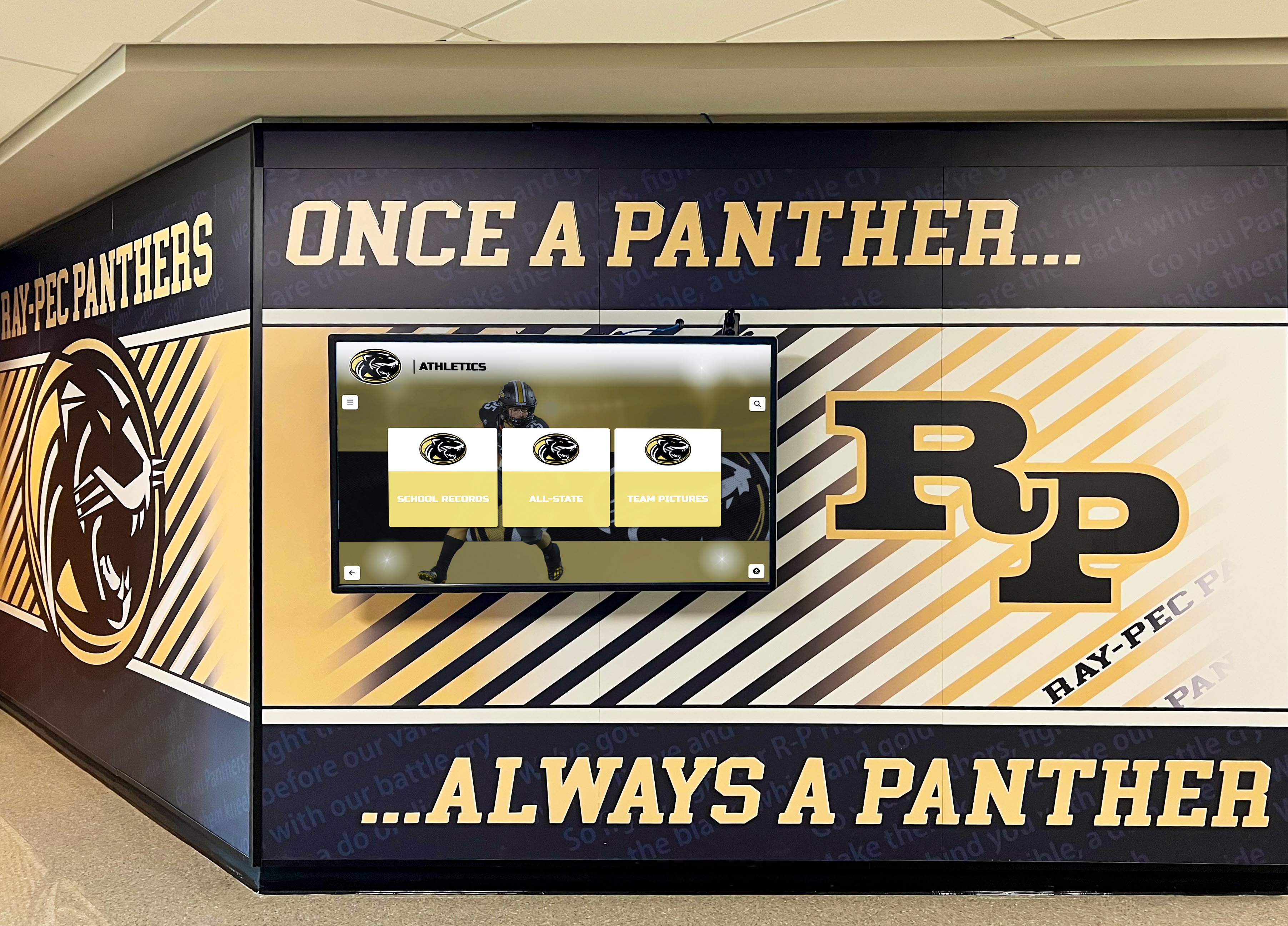
Special Applications for Different Community Settings
Municipal and Government Community Recognition
Cities, towns, and counties implementing community praise displays serve entire populations requiring particular attention to diversity and accessibility.
Municipal displays often involve formal government processes including official selection through city councils or commissions, compliance with public meeting requirements, adherence to accessibility regulations, and permanent record-keeping following government documentation standards.
Recognition categories might include citizen of the year awards, distinguished service recognition, public safety heroes, environmental stewardship awards, and arts and culture honors.
Nonprofit Organization Volunteer Recognition
Nonprofit organizations depend entirely on volunteer contributions, making recognition programs particularly valuable for volunteer recruitment, retention, and motivation.
Nonprofit displays might feature volunteer hour milestone achievements, board leadership recognition, program volunteer spotlights, donor acknowledgment for significant contributions, and legacy recognition for long-serving supporters.
Resource-conscious organizations benefit from understanding cost-effective approaches to donation and honor walls that maximize recognition impact while managing limited budgets.
Faith Community Service Recognition
Religious institutions balance recognition with theological perspectives on service, humility, and appropriate acknowledgment.
Faith community displays might celebrate service ministry volunteers, mission trip participants, youth group leaders, religious education instructors, community outreach volunteers, and stewardship of facility and grounds.
Homeowner Association and Neighborhood Recognition
HOAs and neighborhood associations building community connections implement recognition celebrating residents who strengthen neighborhoods.
Neighborhood displays might honor beautification volunteers, community event organizers, neighborhood watch participants, welcoming committee members, and residents exemplifying good neighbor values.
Service Club and Civic Organization Displays
Rotary clubs, Lions clubs, Kiwanis, Elks, and similar service organizations with proud traditions of community service implement recognition honoring members and community partners.
Service organization displays celebrate member service milestones, project leadership, community service awards, partnerships with other organizations, and historical recognition of past leaders and significant contributors.
Measuring Impact and Program Success
Quantitative Engagement Metrics
Display Usage Analytics: Modern recognition software tracks valuable usage data:
- Number of daily interactions and viewing sessions
- Average engagement duration per session
- Most-viewed honoree profiles and content
- Popular features and content types
- Peak usage times and traffic patterns
- Search queries revealing what visitors seek
Community Engagement Indicators: Connect recognition programs to community outcomes:
- Volunteer recruitment and retention rates
- Volunteer hour trends following display implementation
- Nomination submission volume and participation
- Community event attendance and participation
- Social media engagement with recognition content
- Website traffic to online recognition platforms
Qualitative Feedback and Stories
Honoree Experiences: Gather feedback from recognized community heroes:
- Do honorees feel genuinely valued and appreciated?
- What aspects of recognition are most meaningful?
- Has recognition influenced their continued community involvement?
- What content additions would enhance their profiles?
- How has recognition impacted their community connections?
Community Responses: Document broader community reactions:
- Are community members discovering new volunteer opportunities?
- Do residents express pride in recognized community heroes?
- Has recognition visibility influenced civic engagement?
- Are younger community members inspired by role models?
- What unexpected benefits have emerged?
Success Stories: Collect and share impact stories demonstrating recognition value:
- New volunteers inspired by recognized heroes
- Enhanced community pride and identity
- Strengthened connections between community organizations
- Preserved community history through documented contributions
- Intergenerational mentoring inspired by recognition
Continuous Improvement Processes
Assessment should drive enhancement rather than simply documenting status. Regular review cycles examine data, identify opportunities, develop improvements, implement changes, and reassess impact.
This continuous improvement approach ensures recognition displays evolve meeting changing community needs rather than remaining static programs losing relevance over time.
Conclusion: Building Stronger Communities Through Meaningful Praise
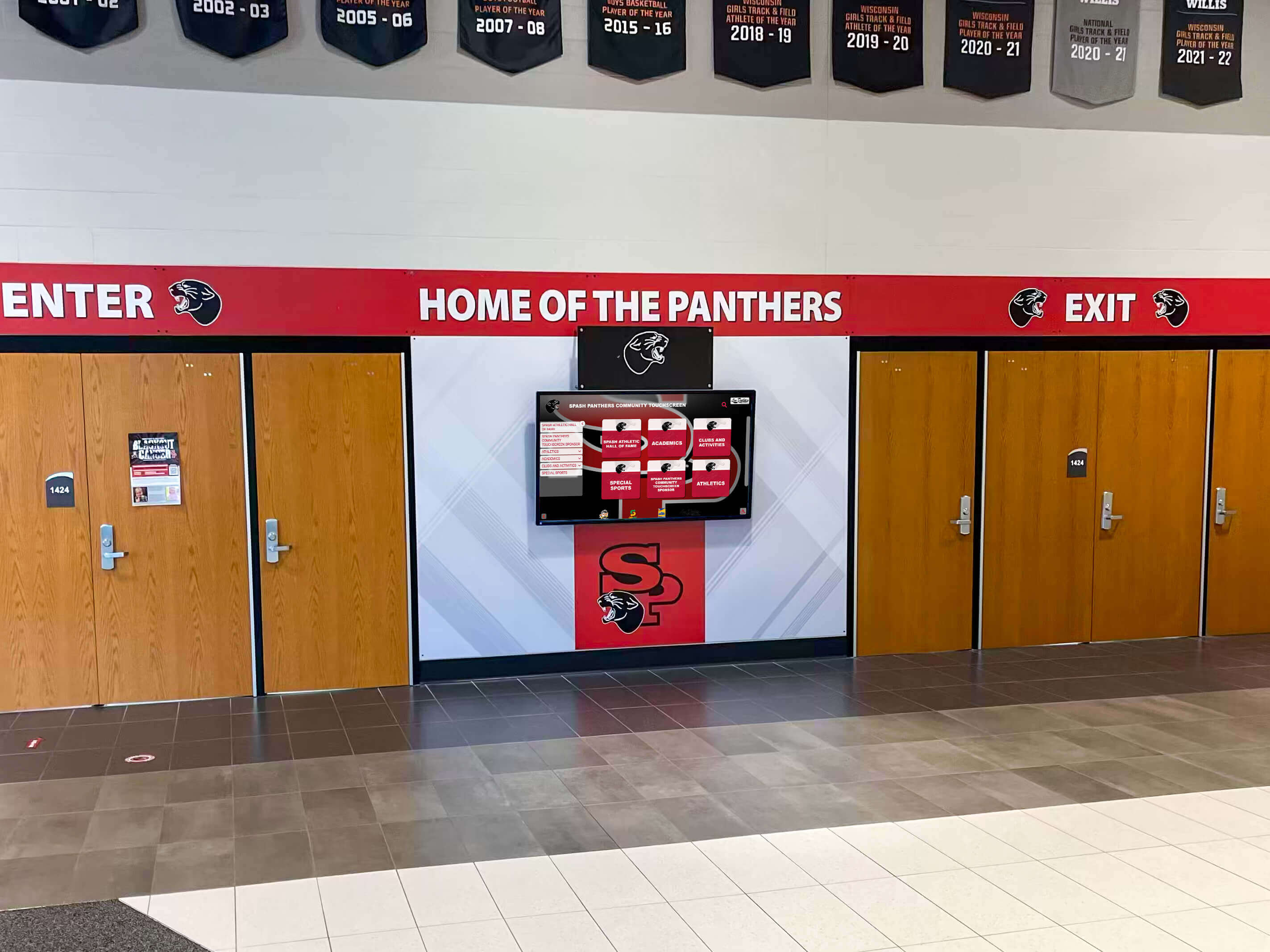
Communities become stronger when they consistently celebrate the individuals who make them better—the volunteers who serve, the leaders who inspire, the educators who teach, the protectors who keep communities safe, and the countless residents whose daily contributions create the quality of life that defines thriving communities.
Community praise touchscreen displays provide powerful platforms for honoring these local heroes with the visibility, permanence, and dignity their contributions deserve. These systems transform recognition from occasional ceremony moments into ongoing celebrations that inspire current community members while preserving history for future generations.
The investment in community recognition technology represents more than hardware and software—it demonstrates community commitment to the values of service, contribution, and civic engagement. It tells volunteers “You matter. Your service is seen. Your contributions are celebrated. You make our community better.” In an era when civic engagement faces challenges and volunteer organizations struggle to recruit helpers, these messages carry extraordinary power.
Key Success Factors for Community Praise Displays:
- Recognize diverse contributions across multiple service categories
- Feature rich multimedia content telling complete honoree stories
- Maintain current content through systematic management processes
- Ensure inclusive recognition representing entire community diversity
- Place displays in high-traffic locations maximizing visibility
- Integrate with broader community engagement and volunteer programs
- Measure impact and continuously improve based on feedback
- Celebrate recognition programs themselves reinforcing their importance
Communities ready to implement community praise displays will find that modern technology has made sophisticated recognition programs accessible to organizations of all sizes and resource levels. Digital platforms provide capabilities once available only through expensive custom development, while cloud-based solutions eliminate complex technical infrastructure requirements.
Whether your community is beginning to consider formal recognition programs or seeking to modernize existing approaches, strategic investment in celebrating community contribution delivers returns that compound over time—stronger civic engagement, enhanced volunteer recruitment and retention, preserved institutional memory, and inspiration for current and future generations.
Ready to celebrate your community heroes with recognition worthy of their contributions? Solutions like Rocket Alumni Solutions provide comprehensive platforms designed specifically for community recognition programs, combining powerful functionality with ease of use that makes sophisticated praise displays accessible to communities of any size. Your local heroes deserve recognition that matches their impact—community praise touchscreen displays deliver tributes worthy of exceptional contributions.
